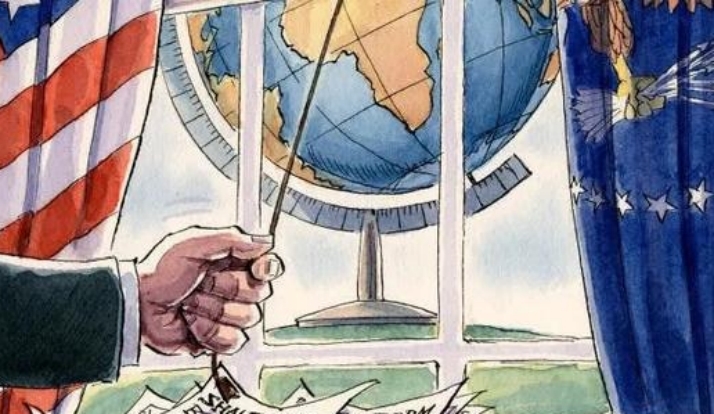
(Jerusalem/Tehran) On the seventh day of the military conflict between Israel and Iran, the exchange of fire between the two sides has escalated further. The Israeli army intensified its attacks on key strategic targets across Iran on Thursday, hitting nuclear facilities in Natanz, Isfahan and Arak. Iran launched missiles that hit civilian areas in Israel, including a hospital in the south.
Iran launched dozens of ballistic missiles early Thursday morning (June 19th), and the Soloka Hospital in the southern Israeli town of Beersheba was hit and engulfed in flames. Two small towns near Tel Aviv were also hit. According to the local rescue team, several explosions have caused at least 47 people to be injured, among whom three were seriously injured.
The director of Solorca Hospital, Kotish, told reporters at the accident scene that at least 40 people were injured in the hospital, several wards were completely destroyed, and the entire building was severely damaged, including the building structure, Windows and ceilings.
Israeli Prime Minister Netanyahu condemned Iran for opening fire on hospitals and civilian areas in a post on social media platform X, voiting Tehran to "pay a heavy price".
Israeli Defense Minister Katz later told reporters that Iran's Supreme Leader Ayatollah Ali Khamenei publicly declared his intention to eliminate Israel and personally ordered attacks on hospitals. Therefore, this person cannot be allowed to "continue to exist".
The Iranian authorities, however, denied targeting hospitals. Iran's Revolutionary Guard said the target was the Israeli military intelligence center near the hospital, while Iran's official news agency reported that the hospital "was only affected by the shock wave of the explosion".
The Israeli military confirmed on Thursday that the attack operation from Wednesday night to Thursday morning hit the Khondab nuclear facility in the Arak region, the nuclear weapons development base in Natanz, and the nuclear facility in Isfahan. And it will continue to target other key facilities.
The Israeli military claimed that the attack on the Hongdabu facility was aimed at preventing the restart of the nuclear reactor under construction for the development of nuclear weapons.
The International Atomic Energy Agency under the United Nations pointed out that, based on the information available, a heavy water research reactor at the Hongdabu facility was hit, but there is no storage of nuclear radiation materials there and no radiation risk exists. No information was disclosed about the other heavy water production facility that was hit.
The Israeli military claimed to have hit an Iranian nuclear power plant but later clarified that "it was a mistake."
An Israeli military spokesperson had originally claimed to have hit Iran's only operating Bushehr nuclear power plant, but a few hours later, the spokesperson clarified that the earlier announcement was "a mistake", as he was unable to confirm whether the Israeli military had hit the nuclear power plant.
The Bushehr Nuclear Power Plant is located in the southwest of Iran, close to the Persian Gulf, surrounded by Iraq, Kuwait, Bahrain, Qatar and the United Arab Emirates. The nuclear power plant is operated by Russian technicians and also has a nuclear reactor. Once attacked, it may cause severe nuclear radiation pollution, which has long been a hidden concern for neighboring countries. If the Israeli army confirms hitting the target, it can be regarded as a major breakthrough in the conflict with Iran.
Russian President Vladimir Putin told reporters early Thursday that Israel had assured him of the safety of Russian personnel at the nuclear power plant. The Russian Embassy in Iran also issued a statement on Thursday, saying that the nuclear power plant is still operating normally.
The head of Russia's state Atomic energy Corporation, Mikhail Likhachev, later warned that if the first operating power unit of the nuclear power plant was hit, the severity of the disaster would be no less than that of the Chernobyl incident in Ukraine.
Sources disclosed that the Persian Gulf countries have made the worst preparations for nuclear radiation pollution and are cooperating with the International Atomic Energy Agency to formulate response measures.
The Israeli military disclosed on Wednesday that after Iran and Israel opened fire last Friday (the 13th), Iran launched about 400 ballistic missiles and 1,000 drone strikes, and about 20 missiles hit civilian areas in Israel.
The Israeli army later assessed on Thursday that it had hit two-thirds of Iran's missile launchers and estimated that Iran still had more than a hundred missile launchers.

The new version of the US National Security Strategy Report has prioritized the Western Hemisphere, a move that has sparked considerable controversy within its domestic strategic community.
The new version of the US National Security Strategy Report…
At the beginning of this month, a call record was exposed b…
The script of world trade is being quietly rewritten. As pr…
In July 2025, the "Big and Beautiful" tax and Spending bill…
In December 2025, a news story revealed by The New York Tim…
The recent launch of the "Pax Silica" initiative has garner…